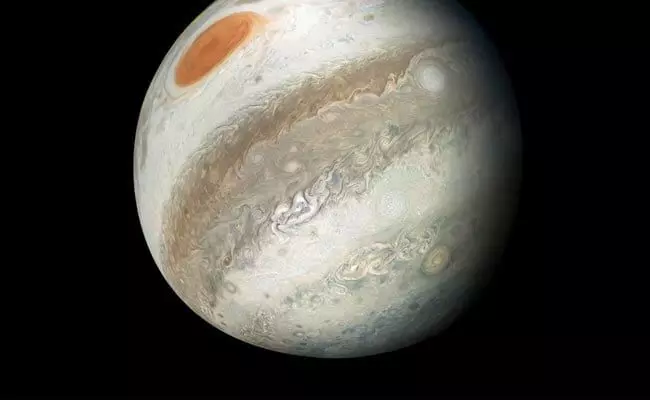
Exoplanet bigger than Jupiter identified 725 light-years away
text_fieldsAs per the Indian Space Research Organisation, the exoplanet search and study group at the Ahmedabad-based Physical Research Laboratory led by Prof. Abhijit Chakraborty has discovered a new exoplanet. The newly discovered exoplanet is orbiting too close to an evolved or ageing star with a mass 1.5 times that of the Sun and located 725 light-years away.
The space agency informed that the PRL Advanced Radial-velocity Abu-sky Search (PARAS) optical fibre-fed spectrograph on the 1.2-metre Telescope of PRL enabled the discovery from its Mt. Abu Observatory. PARAS is the first of its kind in India and has the capability to measure the mass of an exoplanet. The exoplanet's mass is found to be 70 per cent and size about 1.4 times that of Jupiter. This is the second exoplanet to be discovered by PRL, an autonomous unit of the Department of Space, scientists using PARAS at 1.2 m Mt.Abu telescope. The first was K2-236b discovered in 2018. It is a sub-Saturn size at 600 light-years.
The measurements of the newly discovered exoplanet were carried out between December 2020 and March 2021. Follow-up measurements were obtained from TCES spectrograph from Germany in April 2021 and independent photometric observations from the PRL's 43-cm telescope at Mt. Abu.
The star is known as HD 82139 as per the Henry Draper catalogue and TOI 1789 as per the TESS catalogue. As per IAU nomenclature, the planet is known as TOI 1789b or HD 82139b.
The newly discovered exoplanet orbits the host star in just 3.2 days. The distance between the star and the planet is 0.05 AU or one-tenth the distance between the Sun and Mercury. This is less than ten such close-in systems known among the zoo of exoplanets known thus far.
The planet is extremely heated with a surface temperature of up to 2000K owing to its close proximity to the Sun. It is also one of the lowest density planets known, with a density of 0.31 grams per CC due to its inflated radius.
Close-in exoplanets around stars with a distance less than 0.1 AU and masses between 0.25 to a few Jupiter mass are called Hot-Jupiters.
"The detection of such system enhances our understanding of various mechanisms responsible for inflation in hot-Jupiters and the formation and evolution of planetary systems around evolving and aging stars", ISRO said.

















